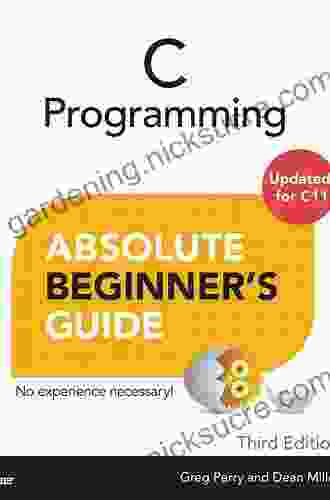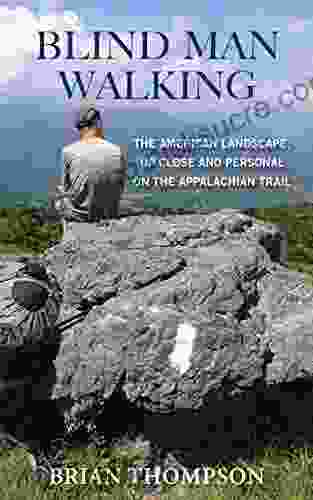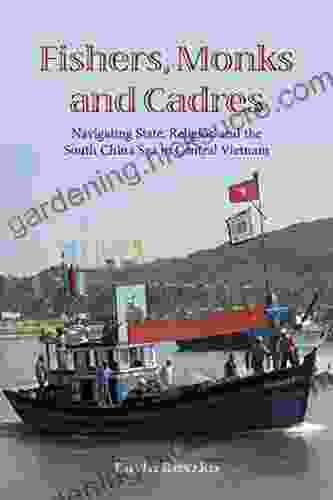Beginners' Comprehensive Guide to the World of Programming

The world of programming is vast, encompassing a multitude of languages, concepts, and applications. For absolute beginners embarking on this exciting journey, it can be both daunting and overwhelming. However, with the right approach and a beginner-friendly guide, you can navigate this realm of technology with ease and confidence. This comprehensive guide will serve as your roadmap, providing a thorough overview of programming from scratch, empowering you with the foundational knowledge and skills to embark on your programming adventure.
Chapter 1: The Fundamentals of Programming
Before delving into the intricacies of programming languages, it is essential to establish a solid foundation by understanding the core concepts that underpin all programming endeavors. This chapter introduces you to the fundamental principles, such as:
4.6 out of 5
| Language | : | English |
| File size | : | 26262 KB |
| Text-to-Speech | : | Enabled |
| Screen Reader | : | Supported |
| Enhanced typesetting | : | Enabled |
| Print length | : | 354 pages |
- Variables and Data Types: Discover how variables are used to store and manipulate data, as well as the different types of data that can be represented, such as numbers, strings, and logical values.
- Operators and Expressions: Explore the various operators used in programming to perform mathematical operations, comparisons, and logical evaluations, allowing you to manipulate data effectively.
- Control Flow: Learn about control flow statements, such as if-else, loops, and switches, which enable you to control the flow of your program based on specific conditions.
- Functions and Modules: Dive into the concept of functions and modules, which provide a structured and reusable approach to organizing and encapsulating code.
Chapter 2: Choosing Your Programming Language
With a grasp of the fundamental concepts, it is time to embark on the exciting journey of selecting your first programming language. This chapter delves into the diverse landscape of programming languages, highlighting their strengths, weaknesses, and applications. You will discover:
- Python: Unveiling Python's popularity and versatility, from web development to data analysis and machine learning.
- Java: Exploring Java's robust and enterprise-grade capabilities, making it a mainstay in software development.
- C++: Delving into the efficiency and performance-oriented nature of C++, suitable for system-level programming and game development.
- JavaScript: Discovering the ubiquity of JavaScript in web development, enabling interactive and dynamic web applications.
Chapter 3: Installing Your Programming Environment
Having chosen your preferred programming language, the next step is to set up your development environment, which provides the necessary tools and infrastructure to write, compile, and execute your code. This chapter guides you through the installation process for popular IDEs (Integrated Development Environments),such as:
- Visual Studio Code: A versatile and customizable IDE suitable for a wide range of programming languages.
- PyCharm: A specialized IDE optimized for Python development, offering advanced features for debugging and code analysis.
- Eclipse: A robust and extensible IDE that supports multiple programming languages, including Java, C++, and PHP.
Chapter 4: Writing Your First Program
With your programming environment in place, it is time to write your first program. This chapter takes you through the step-by-step process of creating a simple program, covering essential elements such as:
- Structure and Syntax: Understand the basic structure and syntax of your chosen programming language, including the use of keywords, identifiers, and statements.
- Input and Output: Learn how to read input from the user and display output on the console, enabling interaction with your program.
- Debugging and Error Handling: Explore techniques for debugging and handling errors, ensuring your programs run smoothly and produce the desired results.
Chapter 5: Data Structures and Algorithms
As your programming skills grow, you will encounter the need to organize and manipulate data efficiently. This chapter introduces you to fundamental data structures, such as arrays, lists, and dictionaries, as well as essential algorithms, including sorting and searching algorithms. You will learn how to:
- Choose the Right Data Structure: Discover the different types of data structures and how to select the most appropriate one based on your application's requirements.
- Implement Common Algorithms: Master the implementation of common algorithms, such as bubble sort, insertion sort, and binary search, enhancing the efficiency of your programs.
- Optimize Your Code: Learn techniques for optimizing your code, improving its performance and reducing computational complexity.
Chapter 6: Object-Oriented Programming (OOP)
Object-oriented programming (OOP) is a paradigm that models real-world entities as objects, enabling the development of modular and reusable code. This chapter delves into the key concepts of OOP, including:
- Classes and Objects: Understand the concept of classes as blueprints for creating objects and the properties and methods associated with them.
- Inheritance and Polymorphism: Explore the concepts of inheritance and polymorphism, which allow you to create hierarchical relationships between classes and extend their functionality.
- Encapsulation and Abstraction: Learn about encapsulation and abstraction, which promote code reusability, maintainability, and information hiding.
Chapter 7: Advanced Concepts
With a solid foundation in the core principles of programming, this chapter ventures into more advanced concepts that enhance your programming capabilities. Topics covered include:
- Concurrency and Parallelism: Discover the techniques for writing concurrent and parallel code, maximizing the utilization of multiple processors and improving application performance.
- Database Connectivity: Learn how to connect your programs to databases, enabling the storage, retrieval, and manipulation of persistent data.
- Web Development: Explore the basics of web development, including HTML, CSS, and JavaScript, empowering you to create interactive and visually appealing web applications.
Chapter 8: Project-Based Learning
To solidify your understanding and apply your programming skills in a practical context, this chapter introduces project-based learning. You will be guided through the process of:
- Identifying a Project: Identifying a project idea that aligns with your interests and skill level, setting the foundation for a meaningful learning experience.
- Planning and Implementation: Planning the project, including defining requirements, sketching out a solution, and implementing the code.
- Testing and Debugging: Rigorously testing your code to identify and resolve bugs, ensuring the project meets its functional and non-functional requirements.
This comprehensive guide has equipped you with the foundational knowledge and skills to embark on your programming journey with confidence. Remember, the world of programming is constantly evolving, with new technologies and approaches emerging on a regular basis. Embrace the continuous learning mindset, stay abreast of advancements, and explore new frontiers in programming to continuously expand your capabilities and stay at the forefront of innovation. With dedication and perseverance, you can achieve your programming goals and make a meaningful impact in this exciting and ever-changing field.
4.6 out of 5
| Language | : | English |
| File size | : | 26262 KB |
| Text-to-Speech | : | Enabled |
| Screen Reader | : | Supported |
| Enhanced typesetting | : | Enabled |
| Print length | : | 354 pages |
Do you want to contribute by writing guest posts on this blog?
Please contact us and send us a resume of previous articles that you have written.
 Fiction
Fiction Non Fiction
Non Fiction Romance
Romance Mystery
Mystery Thriller
Thriller SciFi
SciFi Fantasy
Fantasy Horror
Horror Biography
Biography Selfhelp
Selfhelp Business
Business History
History Classics
Classics Poetry
Poetry Childrens
Childrens Young Adult
Young Adult Educational
Educational Cooking
Cooking Travel
Travel Lifestyle
Lifestyle Spirituality
Spirituality Health
Health Fitness
Fitness Technology
Technology Science
Science Arts
Arts Crafts
Crafts DIY
DIY Gardening
Gardening Petcare
Petcare Michael Romano
Michael Romano Jacquetta Hawkes
Jacquetta Hawkes 1st English Ed Edition Kindle Edition
1st English Ed Edition Kindle Edition Gary S Thorpe
Gary S Thorpe Breanna Lam
Breanna Lam Ricki E Kantrowitz
Ricki E Kantrowitz Patricia Stevens
Patricia Stevens Cassandra Johnson
Cassandra Johnson Alden Jones
Alden Jones Brennan Barnard
Brennan Barnard Wong Kiew Kit
Wong Kiew Kit John Coleman
John Coleman Debra Pascali Bonaro
Debra Pascali Bonaro Iris Bohnet
Iris Bohnet Lj Rivers
Lj Rivers 6th Edition Kindle Edition
6th Edition Kindle Edition Geoffrey West
Geoffrey West Melissa Cheyney
Melissa Cheyney Tim R Wolf
Tim R Wolf Debra Barnes
Debra Barnes Eric Dominy
Eric Dominy Terence N D Altroy
Terence N D Altroy Louis Stanislaw
Louis Stanislaw Diane Duane
Diane Duane Jeffrey A Greene
Jeffrey A Greene Rick Gurnsey
Rick Gurnsey Prerna Lal
Prerna Lal Dinokids Press
Dinokids Press Andrew Maraniss
Andrew Maraniss Bernard Rosner
Bernard Rosner Karl Morris
Karl Morris Pat Dorsey
Pat Dorsey Rowan Ricardo Phillips
Rowan Ricardo Phillips Lenora Ucko
Lenora Ucko Gregory Collins
Gregory Collins Skye Genaro
Skye Genaro L Madison
L Madison Dave Gerr
Dave Gerr Patrick Hunt
Patrick Hunt James Mcnicholas
James Mcnicholas Dervla Murphy
Dervla Murphy Richard Ania
Richard Ania Bertolt Brecht
Bertolt Brecht Jo Frost
Jo Frost Emily A Duncan
Emily A Duncan Samantha Lovely
Samantha Lovely Duy Tran
Duy Tran Erika Bornman
Erika Bornman William A Dembski
William A Dembski Chris Lehto
Chris Lehto 5th Edition Kindle Edition
5th Edition Kindle Edition Lin Pardey
Lin Pardey Robert S Mueller
Robert S Mueller Susan E Cayleff
Susan E Cayleff Karen Myers
Karen Myers Tony Horton
Tony Horton Brian Thompson
Brian Thompson Syougo Kinugasa
Syougo Kinugasa Marie Louise Von Franz
Marie Louise Von Franz E Bruce Goldstein
E Bruce Goldstein Elizabeth Bradfield
Elizabeth Bradfield Andrew Weber
Andrew Weber Mary H K Choi
Mary H K Choi George W E Nickelsburg
George W E Nickelsburg Jordan Ifueko
Jordan Ifueko Marcia Verduin
Marcia Verduin Terrence Real
Terrence Real Tracy Gharbo
Tracy Gharbo Donna M Mertens
Donna M Mertens J D Salinger
J D Salinger John Green
John Green Elizabeth Sims
Elizabeth Sims Kerry Fraser
Kerry Fraser Subsequent Edition Kindle Edition
Subsequent Edition Kindle Edition Garrett Grolemund
Garrett Grolemund John Iceland
John Iceland Fata Ariu Levi
Fata Ariu Levi Don Fink
Don Fink Sherry Monahan
Sherry Monahan Kelly Slater
Kelly Slater Mark Brazil
Mark Brazil Deanne Howell
Deanne Howell 2012th Edition Kindle Edition
2012th Edition Kindle Edition Allan Mundsack
Allan Mundsack Patrick Lange
Patrick Lange Kerri Maniscalco
Kerri Maniscalco Gregory J Privitera
Gregory J Privitera Caroline Porter Thomas
Caroline Porter Thomas Paul Deepan
Paul Deepan Jacqueeia Ferguson
Jacqueeia Ferguson Billie Jean King
Billie Jean King Peter Cossins
Peter Cossins Naomi Scott
Naomi Scott Eric I Karchmer
Eric I Karchmer 50minutes Com
50minutes Com Theresa Cheung
Theresa Cheung Patrick Viafore
Patrick Viafore Heather Demetrios
Heather Demetrios Seymour Simon
Seymour Simon Peter Dewhurst
Peter Dewhurst Porter Fox
Porter Fox Bernard Cornwell
Bernard Cornwell Jim Burns
Jim Burns Jason Curtis
Jason Curtis Dalai Lama
Dalai Lama Eva Feder Kittay
Eva Feder Kittay Glenn N Levine
Glenn N Levine Bookrags Com
Bookrags Com Raymond H Thompson
Raymond H Thompson Andrew Collins
Andrew Collins William Regal
William Regal Michael S Gazzaniga
Michael S Gazzaniga Mei Fong
Mei Fong Jean Clottes
Jean Clottes Dominik Hartmann
Dominik Hartmann A Christine Harris
A Christine Harris Paul Martin
Paul Martin Bobby Blair
Bobby Blair Muata Ashby
Muata Ashby Natasha Preston
Natasha Preston John Gookin
John Gookin Richard Adams
Richard Adams John Hands
John Hands Frank Sargeant
Frank Sargeant Freda Mcmanus
Freda Mcmanus Robert Thurston
Robert Thurston Robert A Johnson
Robert A Johnson Stephen P Anderson
Stephen P Anderson Monica Sorrenson
Monica Sorrenson Kristine Setting Clark
Kristine Setting Clark Nathan Jendrick
Nathan Jendrick Broccoli Lion
Broccoli Lion James Diego Vigil
James Diego Vigil Theodor W Adorno
Theodor W Adorno Chris Stewart
Chris Stewart Jenifer Fox
Jenifer Fox Thomas Wentworth Higginson
Thomas Wentworth Higginson Ziemowit Wojciechowski
Ziemowit Wojciechowski Gershon Ben Keren
Gershon Ben Keren Naomi Feil
Naomi Feil Justin Bower
Justin Bower Chris Dietzel
Chris Dietzel Margaret Littman
Margaret Littman Filipe Masetti Leite
Filipe Masetti Leite Mauricio Cabrini
Mauricio Cabrini Bree Moore
Bree Moore Claudio De Castro
Claudio De Castro Ben Egginton
Ben Egginton Lareina Rule
Lareina Rule Andre Norton
Andre Norton Hong Chen
Hong Chen A R Bernard
A R Bernard Whit Honea
Whit Honea Marty Bartholomew
Marty Bartholomew Sheryl Crow
Sheryl Crow Tony Hernandez Pumarejo
Tony Hernandez Pumarejo Herbert Feigl
Herbert Feigl 8th Edition Kindle Edition
8th Edition Kindle Edition Evan Brashier
Evan Brashier Kelly Skeen
Kelly Skeen 006 Edition Kindle Edition
006 Edition Kindle Edition Thomas R Baechle
Thomas R Baechle Oscar Wegner
Oscar Wegner Mark V Wiley
Mark V Wiley Jamaica Stevens
Jamaica Stevens Patricia O Quinn
Patricia O Quinn Natalie Smith
Natalie Smith Shelby Hailstone Law
Shelby Hailstone Law Robert K Tyson
Robert K Tyson 2005th Edition Kindle Edition
2005th Edition Kindle Edition Edward Rosenfeld
Edward Rosenfeld Janetti Marotta
Janetti Marotta Andy Charalambous
Andy Charalambous Michael W Ford
Michael W Ford Bruce Watson
Bruce Watson Dan Wingreen
Dan Wingreen Jong Chul Ye
Jong Chul Ye Bill Reif
Bill Reif Yan Shen
Yan Shen Gayle Jervis
Gayle Jervis Jiichi Watanabe
Jiichi Watanabe John A Yoegel
John A Yoegel Lewis Henry Morgan
Lewis Henry Morgan Dr Brenda Stratton
Dr Brenda Stratton Heather Rain Mazen Korbmacher
Heather Rain Mazen Korbmacher Jd Brown
Jd Brown L S Boos
L S Boos Dustyn Roberts
Dustyn Roberts Riddleland
Riddleland Patricia Moore Pastides
Patricia Moore Pastides Kenny Casanova
Kenny Casanova Jessica Shortall
Jessica Shortall Jeff Gill
Jeff Gill Michaela Stith
Michaela Stith Deepak Chopra
Deepak Chopra Gina Rae La Cerva
Gina Rae La Cerva Emma Dalton
Emma Dalton Grant Thompson
Grant Thompson Leigh Calvez
Leigh Calvez John Gribbin
John Gribbin Robert Bauval
Robert Bauval Mark Gregston
Mark Gregston 1st Edition Kindle Edition
1st Edition Kindle Edition Patricia S Potter Efron
Patricia S Potter Efron Emma Lord
Emma Lord Robert Venditti
Robert Venditti 7th Edition Kindle Edition
7th Edition Kindle Edition 3rd Ed Edition Kindle Edition
3rd Ed Edition Kindle Edition Max Domi
Max Domi Clint Malarchuk
Clint Malarchuk Leon Anderson
Leon Anderson Dan Blackburn
Dan Blackburn Tom Lyons
Tom Lyons 4th Edition Kindle Edition With Audio Video
4th Edition Kindle Edition With Audio Video J Michael Leger
J Michael Leger Joe Chilson
Joe Chilson Chase Williams
Chase Williams Chris I Naylor
Chris I Naylor Christopher Mcdougall
Christopher Mcdougall Chris Froome
Chris Froome Z Justin Ren
Z Justin Ren Laurie Forest
Laurie Forest Martin Mobraten
Martin Mobraten Alice Ginott
Alice Ginott Amy Ogle
Amy Ogle Kristi K Hoffman
Kristi K Hoffman Roger Gordon
Roger Gordon Stewart Smith
Stewart Smith Olszewski Marie Erin
Olszewski Marie Erin Katie M John
Katie M John Tom Mchale
Tom Mchale Sarah Templeton
Sarah Templeton Suzie Cooney
Suzie Cooney 4th Edition Kindle Edition
4th Edition Kindle Edition Bruno Latour
Bruno Latour Louis Liebenberg
Louis Liebenberg Theodore X O Connell
Theodore X O Connell Meik Wiking
Meik Wiking Steve Kantner
Steve Kantner Mitch Rubman
Mitch Rubman Nick Winkelman
Nick Winkelman Jozef Nauta
Jozef Nauta Howard Mudd
Howard Mudd David Simkins
David Simkins Buddy Martin
Buddy Martin Nnedi Okorafor
Nnedi Okorafor Christoph Delp
Christoph Delp Jon Dunn
Jon Dunn Theris A Touhy
Theris A Touhy Nathalie Dupree
Nathalie Dupree Claire Baker
Claire Baker Christopher Lakeman
Christopher Lakeman Jack M Bloom
Jack M Bloom Oliver Theobald
Oliver Theobald Sadie Radinsky
Sadie Radinsky Brenda Dehaan
Brenda Dehaan Steve Magness
Steve Magness Icon Digital Publishing
Icon Digital Publishing Aubrey Clayton
Aubrey Clayton Diamond Wilson
Diamond Wilson Kate Spencer
Kate Spencer Heather Job
Heather Job Lars Behnke
Lars Behnke Starley Talbott
Starley Talbott Jay Wilkinson
Jay Wilkinson Christa Orecchio
Christa Orecchio Manuel De La Cruz
Manuel De La Cruz Robert Ferguson
Robert Ferguson Eloise Jarvis Mcgraw
Eloise Jarvis Mcgraw Sandra Mizumoto Posey
Sandra Mizumoto Posey Tyler Vanderweele
Tyler Vanderweele Aly Madhavji
Aly Madhavji Terence Grieder
Terence Grieder Gianni La Forza
Gianni La Forza Justine Brooks Froelker
Justine Brooks Froelker Elizabeth D Hutchison
Elizabeth D Hutchison Mimi Lemay
Mimi Lemay Kennedy Achille
Kennedy Achille Ellen Sue Turner
Ellen Sue Turner Alessa Ellefson
Alessa Ellefson Jeremy Desilva
Jeremy Desilva Greta Solomon
Greta Solomon Bryan Smith
Bryan Smith Linda A Roussel
Linda A Roussel Susan Walker
Susan Walker Martha Menchaca
Martha Menchaca Dr Katayune Kaeni
Dr Katayune Kaeni Leonard Pellman
Leonard Pellman Peter Wohlleben
Peter Wohlleben Cindy Kennedy
Cindy Kennedy Amy Chua
Amy Chua Daphne Adler
Daphne Adler James D Long
James D Long Nate G Hilger
Nate G Hilger Sloane Mcclain
Sloane Mcclain Michael Clarke
Michael Clarke Juno Dawson
Juno Dawson Mark Hatmaker
Mark Hatmaker Edyta Roszko
Edyta Roszko Miko Flohr
Miko Flohr Anthony Arvanitakis
Anthony Arvanitakis Steven D Levitt
Steven D Levitt Ernest Shackleton
Ernest Shackleton Miranda Castro
Miranda Castro Apsley Cherry Garrard
Apsley Cherry Garrard Jasper Godwin Ridley
Jasper Godwin Ridley Patrick E Mcgovern
Patrick E Mcgovern Shonna Slayton
Shonna Slayton Kyla Stone
Kyla Stone Joe Cuhaj
Joe Cuhaj Greg Midland
Greg Midland Leslie Leyland Fields
Leslie Leyland Fields Alec Crawford
Alec Crawford Gail Craswell
Gail Craswell Eli Boschetto
Eli Boschetto Joseph E Garland
Joseph E Garland Kevin Paul
Kevin Paul Justin Hammond
Justin Hammond Rashad Jennings
Rashad Jennings John Collins
John Collins Jillian Dodd
Jillian Dodd A C Grayling
A C Grayling Gregory A Boyd
Gregory A Boyd Mohamed Elgendy
Mohamed Elgendy David Beaupre
David Beaupre Barnett Rich
Barnett Rich Robert Pondiscio
Robert Pondiscio 2nd Edition Kindle Edition
2nd Edition Kindle Edition Monte Burch
Monte Burch Nadav Snir
Nadav Snir Brooklyn James
Brooklyn James G I Gurdjieff
G I Gurdjieff Manhattan Prep
Manhattan Prep Sam Irwin
Sam Irwin Carol Stock Kranowitz
Carol Stock Kranowitz Geri Ann Galanti
Geri Ann Galanti Tok Hui Yeap Rd Csp Ld
Tok Hui Yeap Rd Csp Ld Sam Goulden
Sam Goulden Michael Geheran
Michael Geheran Lucas Whitecotton
Lucas Whitecotton Liesbet Collaert
Liesbet Collaert Collins Gcse
Collins Gcse Dan Falk
Dan Falk John Kreiter
John Kreiter Lois Duncan
Lois Duncan Nikki Grimes
Nikki Grimes Elizabeth Wenk
Elizabeth Wenk Barbara Klein
Barbara Klein Stefan Hofer
Stefan Hofer Edward Frenkel
Edward Frenkel 3rd Edition Kindle Edition
3rd Edition Kindle Edition Vibrant Publishers
Vibrant Publishers Lee Smolin
Lee Smolin Bonnie Scott
Bonnie Scott Jason Miller
Jason Miller Simon G Thompson
Simon G Thompson Tami Lynn Kent
Tami Lynn Kent Bob Welch
Bob Welch Andrea Wulf
Andrea Wulf Ellen Levitt
Ellen Levitt Maureen Johnson
Maureen Johnson Lesli Richards
Lesli Richards Andrew G Marshall
Andrew G Marshall Claire Sierra
Claire Sierra Pamela Adams
Pamela Adams Richard Bromfield
Richard Bromfield Katie J Trent
Katie J Trent Justin Doyle
Justin Doyle Tom Pyszczynski
Tom Pyszczynski Leonardo Trasande
Leonardo Trasande Kate Usher
Kate Usher Tasha Dunn
Tasha Dunn Cynthia Bourgeault
Cynthia Bourgeault Kristen Riecke
Kristen Riecke L Ulloque
L Ulloque Josh Mulvihill
Josh Mulvihill Russell Miller
Russell Miller Jonathan Ross
Jonathan Ross David Cheng
David Cheng Joseph Chilton Pearce
Joseph Chilton Pearce Neal Bascomb
Neal Bascomb Harry Middleton
Harry Middleton Marisha Pessl
Marisha Pessl Elaine Beaumont
Elaine Beaumont Adam Silvera
Adam Silvera A C Davison
A C Davison Janet Sasson Edgette
Janet Sasson Edgette P G Maxwell Stuart
P G Maxwell Stuart Mike Tyson
Mike Tyson Kekla Magoon
Kekla Magoon Andrew Shapland
Andrew Shapland 1st Ed 2016 Edition Kindle Edition
1st Ed 2016 Edition Kindle Edition Paul Johnson
Paul Johnson Betty Crocker
Betty Crocker David Kushner
David Kushner Rifujin Na Magonote
Rifujin Na Magonote Carl J Sindermann
Carl J Sindermann Ulla Sarmiento
Ulla Sarmiento Laura Bright
Laura Bright A Digger Stolz
A Digger Stolz David Lloyd Kilmer
David Lloyd Kilmer Michael Alvear
Michael Alvear Dr Danny Penman
Dr Danny Penman Jay Cassell
Jay Cassell Roselyn Teukolsky
Roselyn Teukolsky George Pendle
George Pendle Josh Elster
Josh Elster Keith Siragusa
Keith Siragusa Steve Garnett
Steve Garnett J Morgan Mcgrady
J Morgan Mcgrady Brian Kent
Brian Kent Eric Haseltine
Eric Haseltine Joe Oliver
Joe Oliver Alan Jacobs
Alan Jacobs Micah Goodman
Micah Goodman Christy Jordan
Christy Jordan Jasmine Greene
Jasmine Greene Raymond Buckland
Raymond Buckland Temple Grandin
Temple Grandin Jamie Hand
Jamie Hand Robert Mcentarffer
Robert Mcentarffer 50minutos Es
50minutos Es Robert Peter Gale
Robert Peter Gale Nancy Keene
Nancy Keene Al Ford
Al Ford Charles Seife
Charles Seife
Light bulbAdvertise smarter! Our strategic ad space ensures maximum exposure. Reserve your spot today!
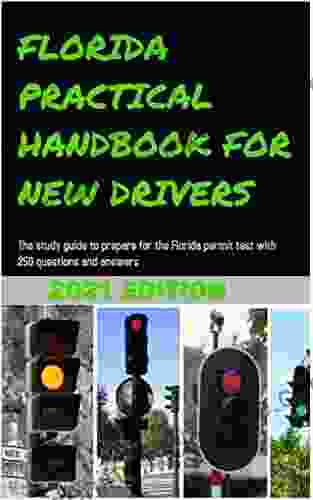
 Geoffrey BlairThe Ultimate Guide to the Florida Permit Test: Conquer 250 Questions with...
Geoffrey BlairThe Ultimate Guide to the Florida Permit Test: Conquer 250 Questions with...
 Arthur C. ClarkeNeverworld Wake by Marisha Pessl: A Haunting and Complex Literary Thriller
Arthur C. ClarkeNeverworld Wake by Marisha Pessl: A Haunting and Complex Literary Thriller Morris CarterFollow ·11.6k
Morris CarterFollow ·11.6k Giovanni MitchellFollow ·12.2k
Giovanni MitchellFollow ·12.2k Langston HughesFollow ·14k
Langston HughesFollow ·14k VoltaireFollow ·7.2k
VoltaireFollow ·7.2k Stuart BlairFollow ·13.9k
Stuart BlairFollow ·13.9k August HayesFollow ·16.8k
August HayesFollow ·16.8k Isaac BellFollow ·3.3k
Isaac BellFollow ·3.3k Osamu DazaiFollow ·7.6k
Osamu DazaiFollow ·7.6k

 Finn Cox
Finn CoxA Comprehensive Guide for Budding Inventors and Backyard...
For those with a restless mind and a...

 Forrest Reed
Forrest ReedThe Ultimate Shopper's Guide to Purchasing Weight Lifting...
Are you looking...
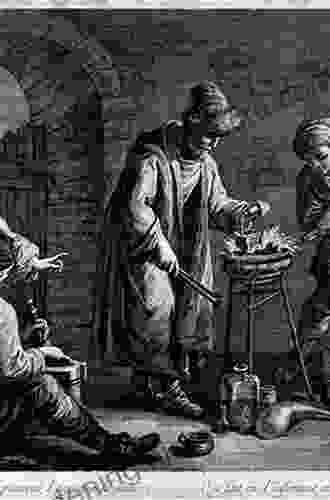
 Dillon Hayes
Dillon HayesThe Chemical Choir: Unveiling the Enchanting Symphony of...
In the enigmatic realm of science, where...

 Ryūnosuke Akutagawa
Ryūnosuke AkutagawaStumbling Thru: Hike Your Own Hike
In the realm of outdoor adventures,...
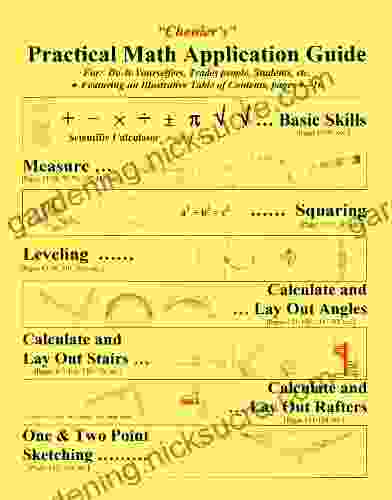
 Terry Pratchett
Terry PratchettUnlock Your Math Skills: A Comprehensive Guide to Chenier...
Math plays a vital role in...
4.6 out of 5
| Language | : | English |
| File size | : | 26262 KB |
| Text-to-Speech | : | Enabled |
| Screen Reader | : | Supported |
| Enhanced typesetting | : | Enabled |
| Print length | : | 354 pages |


